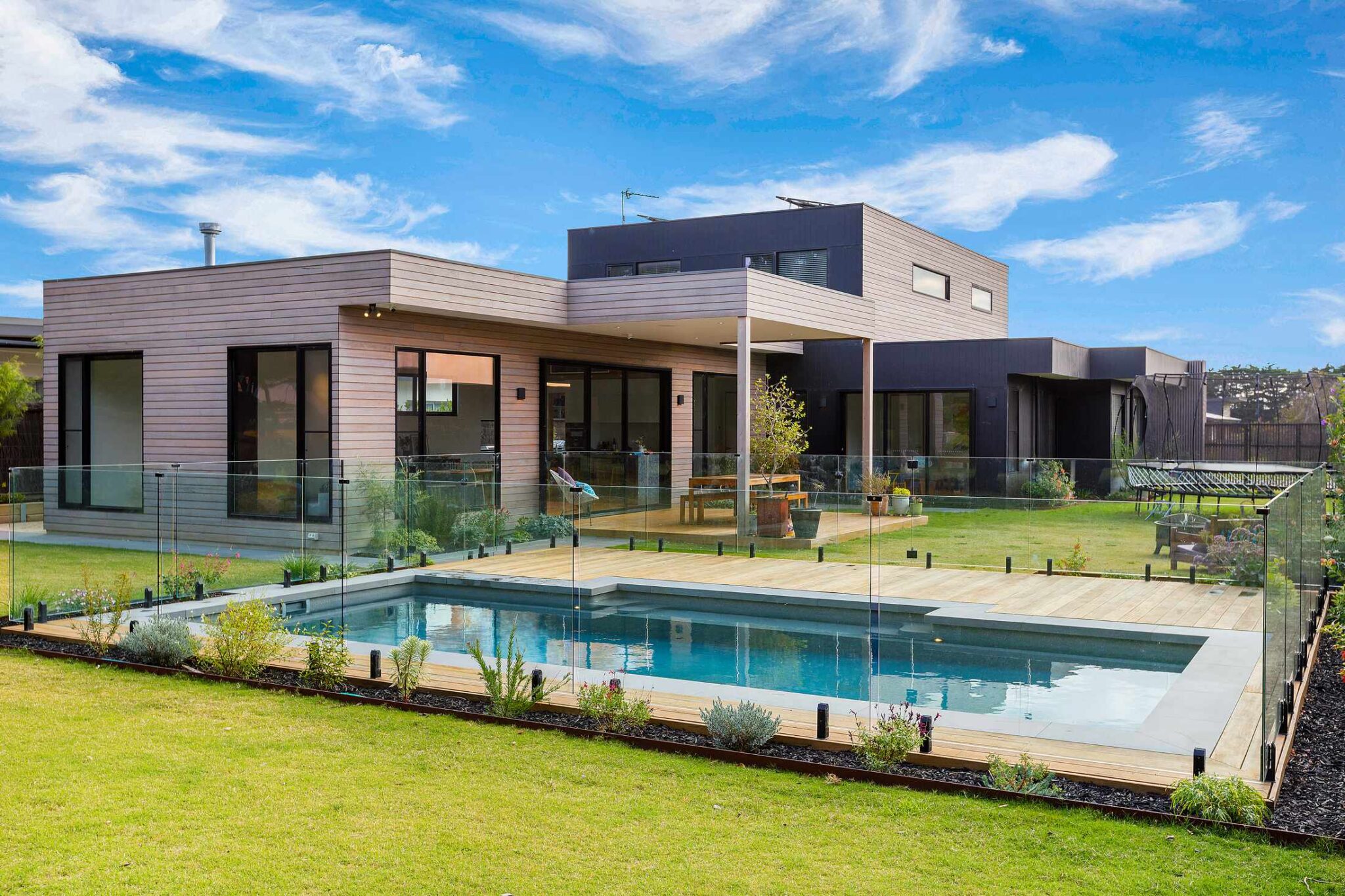How to Build Sustainably on The Bellarine Peninsula and Surf Coast
Sustainable design is at the heart of creating a perfect coastal home. When building in locations with as much natural beauty as the Bellarine Peninsula and Surf Coast, it’s important to consider how your home will integrate harmoniously with the surrounding landscape. One of the best ways to achieve this is by incorporating eco-friendly design solutions.
Integrating sustainable design features into your new home will bring ease to your lifestyle and minimise your impact on the environment. Despite misconceptions that it can be a complicated and costly process, ARCA Director Paul Dugdale assures us that choosing to go green can start with small, yet effective innovations that fit within the bounds of your budget.

Save with Passive Design
As you consider your seaside home, approach your builder to discuss how to include passive design elements that leverage your location.
“Put simply, Passive Design is a clever and sustainable design approach that takes advantage of the local climate to maintain a comfortable temperature range in a home, without the need for mechanical or electrical heating or cooling” explains Paul.
The first step is generally orienting your home design to take full advantage of natural resources such as surrounding shade, natural light, and cool breezes. Coastal locations are often renowned for their year-round sunny climate – which can be capitalised on through a design that encourages passive solar heating.
Passive solar heating is an inexpensive and energy-efficient way to regulate the temperature of your home. By strategically combining orientation, insulation, shading, glazing and thermal mass, this method captures sunlight and keeps the heat inside your home during winter, while keeping out the sun and allowing unwanted heat to escape throughout the warmer months.
Choose renewable and durable materials
With years of experience building on the Bellarine Peninsula and Surf Coast, Paul stresses the importance of carefully considering the right materials for your home. Choosing materials that are designed to withstand coastal weather conditions and environmental stress is crucial to the longevity of your new build – and to reducing your ecological footprint.
Recycled red bricks are a fantastic material choice for your home for several reasons. Aesthetically versatile and incredibly durable, they also have a high thermal mass and can absorb and retain heat energy, which makes them useful in climates where there are large fluctuations in temperature from day to night. Being recycled, they’re also environmentally friendly as they reduce landfill waste and greenhouse gas emissions.
“Effective selection of construction materials throughout your home can make a big difference to comfort and heating and cooling bills; however thermal mass design must be implemented appropriately to be effective” Paul says.
If you favour a more natural look and feel, timber is another durable and eco-friendly choice. Whether you choose to source reclaimed timber or a sustainably grown and harvested local variety such as Grey Gum, timber can be incorporated in your roof beams, flooring and panels, as well as used for decking and cladding to add a touch of coastal elegance to your home’s exterior.
Embrace a connection with nature
Building on the coast presents the exciting opportunity to establish a connection between your home and the beauty of your natural surroundings. Ultimately, you want to build a home that works with your environment. This may mean incorporating passive design principles to harness the elements, such as natural ventilation – a cost-effective way to capture cool breezes through cleverly positioned doors, windows and vents.
If you’re lucky enough to have spectacular ocean views, you might opt for expansive, double-glazed windows that will welcome natural light and lush scenery from every angle. Solar panels can also be employed to capitalise on the sunny climate and cut down on your carbon footprint and energy bills. On a more aesthetic note, opting for exterior cladding and flooring that tie into the surrounding landscape will ensure your home doesn’t disrupt the coastal charm of your environment.
From halls of reclaimed timber to mosaics of recycled tiles, your home can reflect a bond between old and new that is kinder to the planet. When building on the coast, Paul believes that being environmentally conscious is about more than just incorporating sustainable design elements – it’s a way of respecting and recognising the natural beauty all around you.
To learn more about sustainable solutions for your new coastal build, get in touch with ARCA today.

